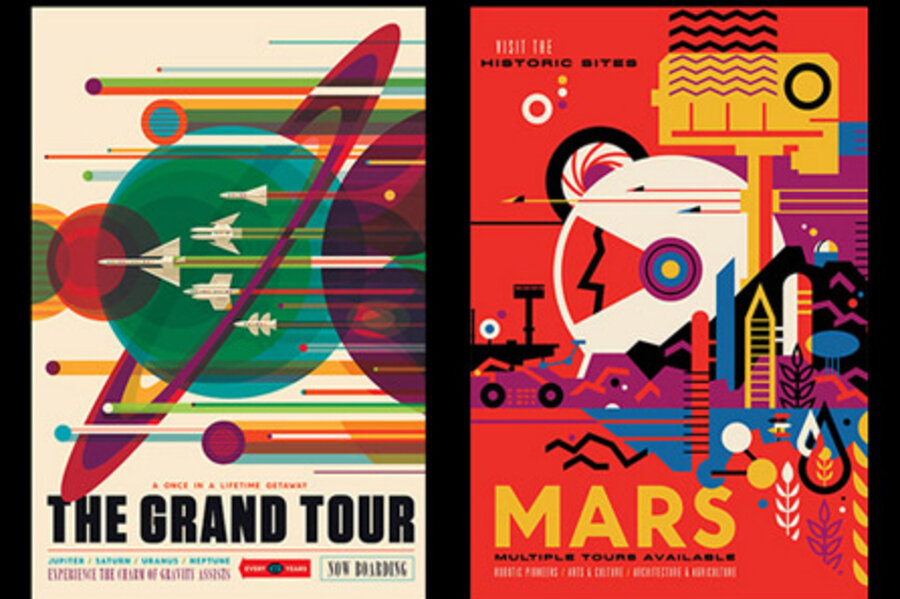Why NASA wants you to dream about traveling to Mars
Loading...
As private companies, like SpaceX and Blue Origin, reach toward the stars and safely descend and government agencies prepare for missions to Mars, NASA is doing all it can to increase interest in space and space tourism.
From last month's release of a 360-view of Mars' dunes to this weeks unveiling of 14 whimsical space tourism posters, NASA wants to get Americans as excited about the current incarnation of the space race as they were in the 1960s.
These efforts are the latest in a string of public relation campaigns NASA has launched to raise awareness of various cosmic projects and discoveries and, likely, to help NASA convince a fiscally tight Congress to grant the agency a larger budget for the new year. So far, it appears to be working.
President Obama announced plans for his 2017 budget proposal for Congress on Tuesday, Feb 9. The plans included a request for a $19 billion budget for NASA, big money for an agency that has seen funding diminish in recent decades. However, the proposed budget does represent a slight shrink from the approved $19.3 billion budget for 2016.
That $19 billion would allow most projects to continue as usual, but would make it hard for NASA to grow. Casey Dreier, The Planetary Society’s director of space policy, told Science that the proposed $19 billion budget was "a step in the right direction, though NASA needs to grow, not shrink, if we want it to achieve the goals set out for it by the nation."
Public interest has usually been an indicator of how much funding NASA receives. Its peak, during the mid sixties, occurred in the midst of the space race. Subsequent bumps in the budget, as in the early 1990s, coincide with high visibility projects, like increased space shuttle missions and the start of the Kennedy Space Station Processing Facility.
NASA has been able to generate a broader audience by using adopting aggressive public relations strategies, from spinning pre-announcement hype of breakthrough discoveries like confirmation of water on Mars; the identification of Earth-like exoplanet, Kepler 452b; and today's recordings of black holes colliding; to drawing out the release of images from the New Horizon's historic voyage to Pluto.
The space travel posters are the latest strategy to generate buzz around space exploration.
The images were created by the company Invisible Creature, run by two brothers, Don and Ryan Clark. "[NASA] gave us notes, bullet points, kind of what topics or themes that visually should be hit in each poster," Don Clark told the Verge.








